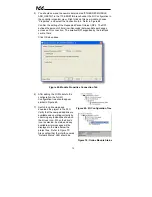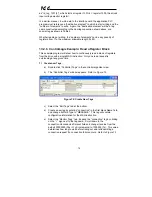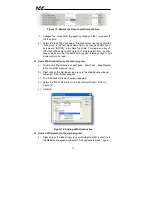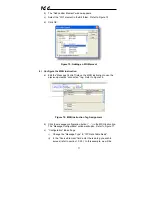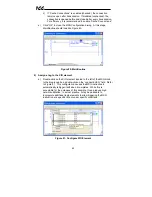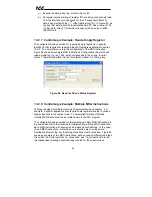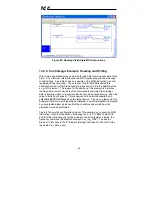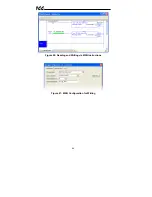
85
ICC
13.3
PCCC
Ethernet-enabled Allen-Bradley legacy PLCs (such as the PLC5E and SLC-
5/05 series) use a protocol called PCCC (Programmable Controller
Communication Commands) to communicate over the Ethernet network. The
interface card supports PCCC for direct connectivity to these PLCs.
If a connection timeout or socket-level error occurs, the driver will trigger a
timeout event as described in section 10.7.4.
13.3.1
Tag Reference
Register contents are read from and written to the interface card via PCCC by
reference to an integer “file/section number” and an “offset/element” within that
file. Reading is performed via the PCCC “PLC5 Read” (DF1 protocol typed
read) service, and writing is performed via the PCCC “PLC5 Write” (DF1
protocol typed write) service.
The formula to calculate which register is targeted in the interface card is
provided in Equation 3.
(
)
offset
100
10
-
number
file
register
target
+
×
=
Equation 3
In Equation 3, “target register”
∈
[1…1485], “file number”
∈
[10…24] (which
means N10…N24), and “offset” is restricted only by the limitations of the
programming software (but is a value of 1485 max). Table 5 provides some
examples of various combinations of file/section numbers and offsets/elements
which can be used to access drive registers. Note that there are multiple
different combinations of file/section numbers and offsets/elements that will
result in the same drive register being accessed.
Table 5: PCCC Target Register Examples
File/Section
Number
Offset/Element
Start Target
Register
N10 1 1
N12 99 299
N11 199 299
N20 7 1007
N24 85 1485
N10 1485 1485
In addition to providing access to the drive registers in their “standard”
numerical locations as mentioned above, the registers can also be accessed in
a special “assembly object” type format by targeting integer file N50. What this
means is that when N50 is targeted for reading, what is actually returned by the
interface card is the user-defined register data as ordered by the EtherNet/IP
produced register configuration array (refer to section 10.8.4). Similarly, when


